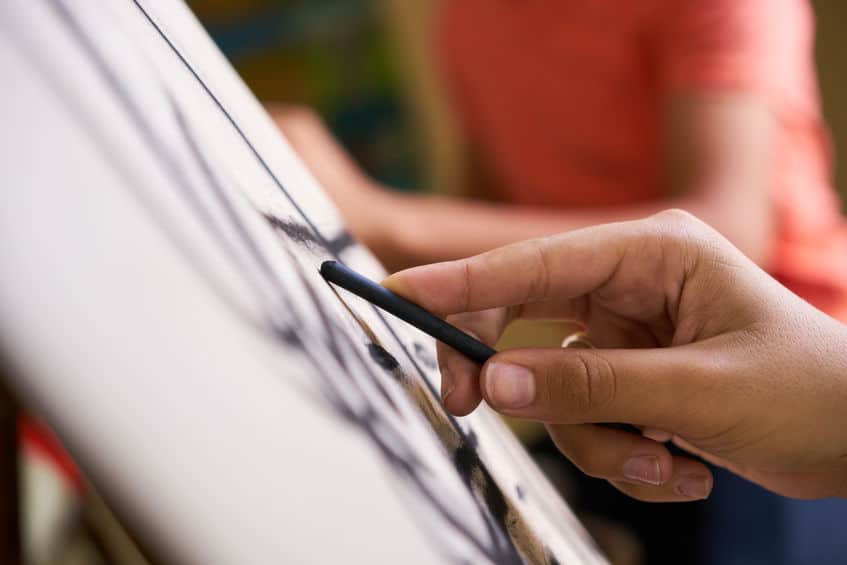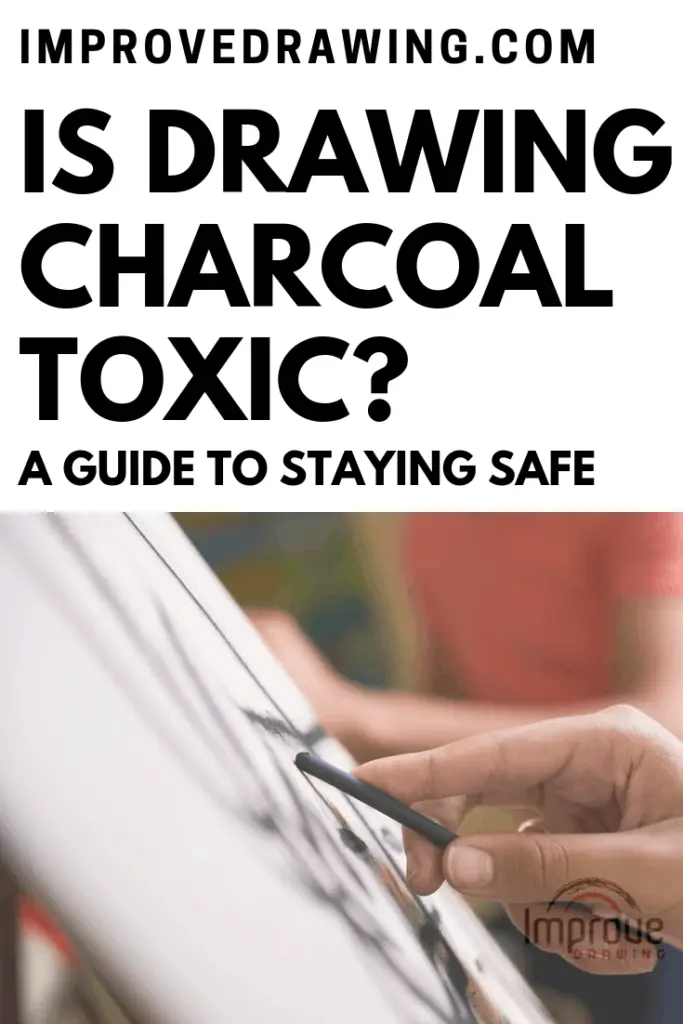
Many drawing mediums create dust, and you may be wondering this is harmful. What follows is a clear guide to working safely with charcoal.
Is drawing charcoal toxic? The good news for artists that love drawing with this versatile medium is that the overwhelming majority of artist charcoal is non-toxic.
If this isn't enough to convince you that charcoal is safe to work with, then you can always buy a brand of charcoal that states explicitly that it is non-toxic.
This probably applies to vine charcoal, but are charcoal pencils non-toxic as well? Again, the overwhelming majority art, but buying one that explicitly states that it is non-toxic is an option as well.
Since charcoal is non-toxic, does that mean that you don't need to take any precautions when you are drawing with it?
No, you have to use common sense. Toxic or not, you still don't want to inhale the charcoal powder. You also don't want to inhale the fumes produced by the fixative that you'll need to use to protect your charcoal drawing.
Health Hazards Associated With Drawing In Charcoal
When drawing with charcoal, you don't have to worry about any toxic effects, but that doesn't mean that you shouldn't use some precautions.
- Charcoal produces dust as you draw. Even if you use a very toothy paper that grabs onto charcoal well, there are going to be particles of charcoal that will sit on top the paper.
- These particles can get into your eyes, nose, or mouth, and if they do, they will likely irritate.
- So, while charcoal may not be toxic, it can still cause some issues if you aren't careful when you are drawing with it.
Drawing Media That Create Dust And The Precautions You Should Take
Whenever you are drawing with any media that produces dust, you should take precautions to keep that dust from getting into your eyes, nose, or mouth.
While charcoal isn't toxic, there are some drawing materials such as soft pastels that do contain toxic elements that you definitely don't want getting into your body.
So, how can you protect yourself from dust created when drawing with charcoal or other materials that could produce it?
- First, make sure that you remove excess dust from your drawing as you work. You have to be careful when doing this because rubbing on any dust on your drawing will smear it, which can quickly ruin your artwork.
- You can remove dust in a variety of ways. You can close your eyes and blow on it gently to push it off of your paper. You can use a paintbrush with a very light touch.
- You can pick up your paper and gently tap it on your desk or table. You can even use a compressed air can, or a fan to blow the dust away.
- Next, make it a point to avoid breathing in any dust. The easiest way to do this is by wearing a dust mask.
- However, dust masks are uncomfortable to wear for an extended period of time, so it's often better to simply blow the dust off of your drawing away from you.
General Drawing Safety Rules
- Always remove excess dust from your drawings. You should do everything you can to avoid breathing in charcoal, pastel, or even graphite dust. Removing excess dust by blowing it away, or using any other sensible method, will reduce the likelihood that you will breathe it in.
- Always draw or paint with a good source of light. Much like reading in the dark isn't good for your eyes, drawing in the dark can strain them as well.
- Always work in a well-ventilated area whenever possible.
- Stretch your wrists and hands regularly. Maintain an upright posture, and get up and walk around periodically.
- Take breaks when you need them. If you run into a problem you can't resolve when you are working on a drawing or painting, then give yourself a break. Don't obsess over the problem, relax, take a mental break, then go back to the issue later.
Using Fixative Or Hairspray To Seal Charcoal, What Precautions Should You Take?
While charcoal is a fantastic medium to work in, it's also very messy. The other major issue with charcoal drawings is that they will smear. Pencil drawings will also, but not to the extent that charcoal drawings will.
You could spend hours creating a masterpiece, then accidentally brush it against something only to watch your drawing destroyed in a fraction of a second. To prevent this type of disaster from happening, you need a way to protect your drawing. Enter spray fixative.
Many people make the mistake of using hairspray to fix their drawings. This is a mistake for several reasons. First of all, hairspray was meant for holding hairstyles in place, not for protecting drawings. So, it's going to be inferior to real spray fixative designed for an artist. Second of all, it will turn the paper of your drawings yellow over time. If you don't have any spray fixative on hand, it's better to put your drawing in a place where it won't be disturbed until you can buy spray fixative.
However, if you are trying to protect a sketch that you don't plan on keeping for a long time, and you don't have any spray fixative on hand, then hairspray will do in a pinch.
No matter what you use to fix your drawings, you need to take some precautions. This is especially true with artist spray fixative since it contains some pretty nasty chemicals. You should never spray fixative in an enclosed area with little ventilation.
Doing so could make you ill or worse. Your best option would be to spray your drawing outdoors, but if there's any wind, then this could ruin your drawing. A more practical approach would be to wear a painter's mask, then spray your drawings in your garage.
Charcoal Is A Safe And Versatile Drawing Medium
Is drawing charcoal toxic? With very few exceptions, it is not. It's a fantastic medium that can create anything from washes when water is added, to deep shadows, to rough textures.
Charcoal drawings can be very dramatic, and the best part is that there are no fumes to worry about. Even the charcoal powder leftover on a paper is largely harmless, even though it can still irritate your eyes, nose, or throat.
When drawing with charcoal use common sense to keep the powder out of your eyes, and use fixatives in a well-ventilated area. If you take these simple precautions, you shouldn't have anything to worry about when creating a charcoal drawing.
 drawing charcoal toxic_ A guide to staying safe” class=”wp-image-1766″ width=”200″ height=”299″/>
drawing charcoal toxic_ A guide to staying safe” class=”wp-image-1766″ width=”200″ height=”299″/>
